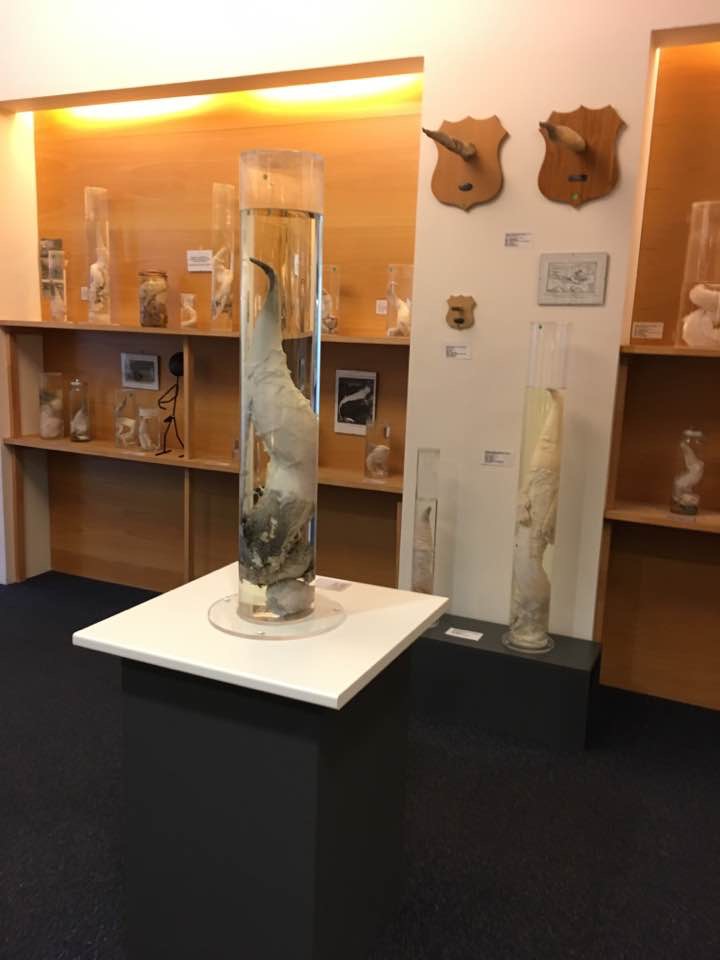|
Gay Wisdom for Daily Living brought to you by White Crane Institute ͏ ͏ ͏ ͏ ͏ ͏ ͏ ͏ ͏ ͏ ͏ ͏ ͏ ͏ ͏ ͏ ͏ ͏ ͏ ͏ ͏ ͏ ͏ ͏ ͏ ͏ ͏ ͏ ͏ ͏ ͏ ͏ ͏ ͏ ͏ ͏ ͏ ͏ ͏ ͏ ͏ ͏ ͏ ͏ ͏ ͏ ͏ ͏ ͏ ͏ ͏ ͏ ͏ ͏ ͏ ͏ ͏ ͏ ͏ ͏ ͏ ͏ ͏ ͏ ͏ ͏ ͏ ͏ ͏ ͏ ͏ ͏ ͏ ͏ ͏ ͏ ͏ ͏ ͏ ͏ ͏ ͏ ͏ ͏ ͏ ͏ ͏ ͏ ͏ ͏ ͏ ͏ ͏ ͏ ͏ ͏ ͏ ͏ ͏ ͏ ͏ ͏ ͏ ͏ ͏ ͏ ͏ ͏ ͏ ͏ ͏ ͏ ͏ ͏ ͏ ͏ ͏ ͏ ͏ ͏ ͏ ͏ ͏ ͏ ͏ ͏ ͏ ͏ ͏ ͏ ͏ ͏ ͏
|
|
||||
| This Day in Gay History | ||||
August 01Born 1819 - HERMAN MELVILLE was born on this date (d: 1891) American novelist and author of the iconic Billy Budd, and Moby Dick; Now considered to have been bisexual, more and more critical scrutiny is focusing on the elements in Melville's work impinging on a host of new areas, among them post-colonialism and imperialism, race and ethnography, internationalism, body criticism and even ecology. The 1855 short story "Benito Cereno" is one of the few works of 19th century American literature to confront the African diaspora and the violent history of race relations in America, while "The Paradise of Bachelors and the Tartarus of Maids" and Billy Budd have been particularly rich for scholars of gender studies and queer studies. Critics have long noted the basic theme of male love that runs through the works of this important American writer, from the amusing and sensuous scenes between Ishmael and Queequeeg sharing the same bed in Moby Dick, to the sinister fate of Billy Budd, the “Beautiful Sailor.” Only recently however, has any scholar dared to examine the handsome Melville’s life in relation to his works and suggest not only that Melville was most certainly a latent homosexual, but that the great love of his life was none other than the lamentably heterosexual and completely unattainable Nathaniel Hawthorne. In his biography of Melville, Edwin Haviland Miller cites example after example of the younger writer’s love for the older novelist, but none as astonishing as Melville’s review of Hawthorne’s Mosses from an Old Manse (1850). Melville, w ho had only recently met Hawthorne and was in a state of exhilaration from their meeting, did not want his new friend to know that he was to review his book in The Literary World. He therefore disguised his identity by signing the review, “By a Virginian Spending time in Vermont.” His infatuation with the famous writer is reflected in an extended metaphor of insemination, in which Hawthorne is clearly penetrating the love-sick Melville: “Already I feel that this Hawthorne has dropped germanous seeds in my soul. He expands and deepens down, the more I contemplate him; and further and further, shoots his strong New England roots into the hot soil in my Southern soil.” Incredible! 1936 - YVES SAINT-LAURENT, Algerian-born, French designer was born on this date (d: 2008) In the bad old days, before journalists simply said what was on their minds, Time magazine was the master of innuendo, taking particular delight in announcing to the world that someone was a fag without ever saying so directly. About thirty years ago, for example, when a flamboyant New York conductor reported that his car was stolen, Time maliciously reported the AWOL marine caught driving it was suddenly identified by the conductor as...er, um...his secretary, who had merely borrowed the auto. The haute couturier Yves St. Laurent’s turn came when Time remarked that “his life with Pierre Berge, his…intimate of fifteen years, has probably been as harmonious as most marriages.” Well, it might have been harmonious. Right after the article appeared, the two split. Nevertheless, Berge stayed on to run the business and the two remained close. One of the most successful and influential designers of the 20th century, Saint-Laurent was one of the first designers to market his brand across the board. He was the first French couturier to come out with a full prêt-à-porter (ready-to-wear) line, although some credit this move with Saint Laurent's wish to democratize fashion; others point out that other couture houses were preparing prêt-à-porter lines at the same time – the House of Yves Saint Laurent merely announced its line first. The first of the company's Rive Gauche stores, which sold the prêt-à-porter line, opened on the rue de Tournon in the 6th arrondissement of Paris, on 26 September 1966. The first customer was Catherine Deneuve. 1983, Saint Laurent became the first living fashion designer to be honored by the Metropolitan Museum of Art with a solo exhibition. It remains one of the most successful shows the Met has ever mounted to this time. In 2001, he was awarded the rank of Commander of the Legion of Honor by French president Jacques Chirac. Saint Laurent retired in 2002 and became increasingly reclusive, living at his homes in Normandy and Morocco with his pet French bulldog. Saint Laurent died on June 1, 2008, of brain cancer at his Paris residence. According to The New York Times, a few days prior, he and Bergé had wed in a same-sex union known as a "Pacte civil de solidarite (PACS) in France. When Saint Laurent was diagnosed as terminal, with only one or two weeks left to live, Bergé and the doctor mutually decided that it would be better for him not to know of his impending death. Bergé said, "I have the belief that Yves would not have been strong enough to accept that. Forbes magazine rated Saint-Laurent the top earning dead celebrity in 2009. Oh Ozymandius...! Noteworthy 1997 - The ICELANDIC PHALLOLOGICAL MUSEUM opened in Iceland; Located in Reykjavik, Iceland, the Phallological Museum houses the world's largest display of penises and penile parts. The collection of 280 specimens from 93 species of animals includes 55 penises taken from whales, 36 from seals and 118 from land mammals, allegedly including Huldufolk (Icelandic elves) and trolls. In July 2011, the museum obtained its first human penis, one of four promised by would-be donors. Its detachment from the donor's body did not go according to plan and it was reduced to a greyish-brown shrivelled mass pickled in a jar of formalin. The museum continues to search for "a younger and a bigger and better one." Founded in 1997 by retired teacher Sigurour Hjartarson and now run by his son Hjörtur Gísli Sigurosson, the museum grew out of an interest in penises that began during Sigurður's childhood when he was given a cattle whip made from a bull’s penis. He obtained the organs of Icelandic animals from sources around the country, with acquisitions ranging from the 170 cm (67”) front tip of a blue whale’s penis to the 2 mm (0.08”) penis bone of a hamster, which can only be seen with a magnifying glass. The museum claims that its collection includes the penises of elves and trolls, though, as Icelandic folklore portrays such creatures as being invisible, they cannot be seen. The collection also features phallic art and crafts such as lampshades made from the scrotums of bulls. The museum has become a popular tourist attraction with thousands of visitors a year — 60% of them women — and has received international media attention, including a Canadian documentary film called The Final Member, which covers the museum's quest to obtain a human penis. According to its mission statement, the museum aims to enable "individuals to undertake serious study into the field of phallology in an organized, scientific fashion." The museum's guest book includes comments such as, "I've never seen so many penises–and I went to boarding school!" (from a New Zealand visitor), "They're bigger in the USA," (from someone from Wisconsin) and "Is there a vagina museum?"(On this point, Sigurður has said, "I'm only collecting the male organ. Somebody else has to do the other job. I'd be interested in how they would preserve it. I think vaginas are better alive.") 2017 - LAMMAS DAY ‒ In English-speaking countries, August 1 is Lammas Day ("loaf-mass day"), the festival of the first wheat harvest of the year. In Wiccan traditions, the name Lammas is used for one of the sabbats, The festival is also known as Lughnasadh, a feast to commemorate the funeral games (Tailtean Games) of Tailtiu, foster-mother of the Irish sun-god Lugh. Lammas is a cross-quarter occurring ¼ of a year after Beltane. Lughnasadh was one of the four main festivals of the medieval Irish calendar: Imbolc at the beginning of February, Beltane on the first of May, Lughnasadh in August and Samhain in November. The early Celtic calendar was based on the lunar, solar, and vegetative cycles, so the actual calendar date in ancient times may have varied. Lughnasadh marked the beginning of the harvest season, the ripening of first fruits, and was traditionally a time of community gatherings, market festivals, horse races and reunions with distant family and friends. Among the Irish it was a favored time for handfastings ‒ trial marriages that would generally last a year and a day, with the option of ending the contract before the new year, or later formalizing it as a more permanent marriage. In Christian tradition on this day it was customary to bring to church a loaf made from the new crop. In many parts of England, tenants were bound to present freshly harvested wheat to their landlords on or before the first day of August. In the Anglo-Saxon Chronicle, where it is referred to regularly, it is called "the feast of first fruits". Now is a great time of year to work on honing your own talents. Learn a new craft, or get better at an old one. Put on a play, write a story or poem, take up a musical instrument, start getting crafty, or sing a song. Whatever you choose to do, this is the right season for rebirth and renewal, so set August 1 as the day to share your new skill with your friends and family. | ||||
|
|8|O|8|O|8|O|8|O|8|O|8|O|8|O|8| Gay Wisdom for Daily Living from White Crane Institute "With the increasing commodification of gay news, views, and culture by powerful corporate interests, having a strong independent voice in our community is all the more important. White Crane is one of the last brave standouts in this bland new world... a triumph over the looming mediocrity of the mainstream Gay world." - Mark Thompson Exploring Gay Wisdom & Culture since 1989! |8|O|8|O|8|O|8|O|8|O|8|O|8|O|8| | ||||
|
|||||
|





